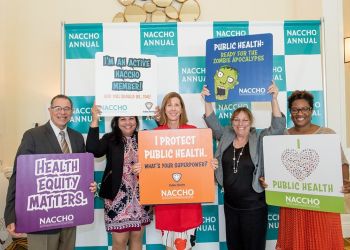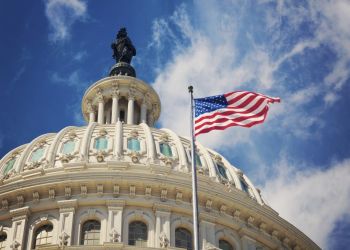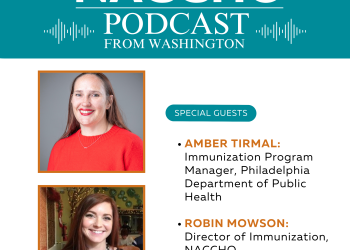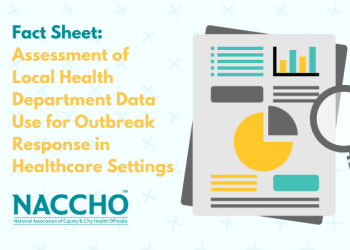In recognition of Gun Violence Awareness Day, NACCHO invites local health departments to view this somber day as an opportunity for remembrance, reflection, and action. In 2021, more Americans died of gun-related injuries than any other year on record with 48,830, the majority of which were deaths by suicide. It is expected that when the full count and analysis by CDC is available for 2022 and 2023, gun-related deaths will continue to be alarmingly high.
While gun deaths continue to increase, systemic and structural racism drive disparate health outcomes, leading to the greatest increases among children and teens and disproportionately effecting Black and Indigenous communities. Gun-related deaths are now the leading cause of death among children and teens, which rose 50%, from 1,732 in 2019 to 2,590 in 2021. The largest increase in homicide deaths related to gun violence was among Black communities, increasing 39% from 2019 to 2020. Meanwhile, Indigenous communities saw the largest increase in gun-related suicides, increasing 42% from 2019 to 2020. These trends are staggering and continue to illuminate the dire necessity to center approaches that dismantle systems of structural violence and racism in any comprehensive response to gun violence. It is also vital to promote evidence-based policies that prevent guns from getting into the hands of people who may use them to harm themselves or others.
Local health departments play an important role in preventing intentional and unintentional gun-related injury and death. In coordination and collaboration with other local, state, and national efforts, local health departments can and should engage in primary, secondary, and tertiary prevention strategies, while addressing the intersection of related public health issues such as suicide, substance use, community violence, and gender-based violence. Local health departments can—and often do—work with a wide variety of partners, including other agencies, clinical- and community-based entities, and their local firearm retailers to prevent gun violence.
The below resources offer a strong start for local health departments to use for planning and implementing public health approaches to gun violence.
- NACCHO Policy Statement – This statement of policy was written by local health department experts and approved by NACCHO’s Board of Directors regarding the prevention of firearm-related injury and death.
- NACCHO Gun Violence Resources Page – NACCHO’s Injury and Violence Prevention program compiled existing resources to help local health departments prevent various types of fatal and non-fatal gun-related injuries, including interpersonal violence, community violence, and suicide.
- Racial Equity Impact Assessment – This assessment identifies and assesses factors bearing on racial equity that should be considered before a policy is implemented.
- Big Cities Health Coalition - Public Health Approach – The Community Safety Realized report describes how the science and practice of public health and the values of equity and justice can shape a community-driven, multisector approach to safety.
- Everytown Everystat – This tool can be used to determine how gun violence impacts the communities public health officials care about by providing data on gun deaths, injuries, and economic cost.
- Everytown Government Grant Navigator – This navigator can be used to find grants that organizations or municipalities are eligible for to implement life-saving gun violence intervention work at the community level.





